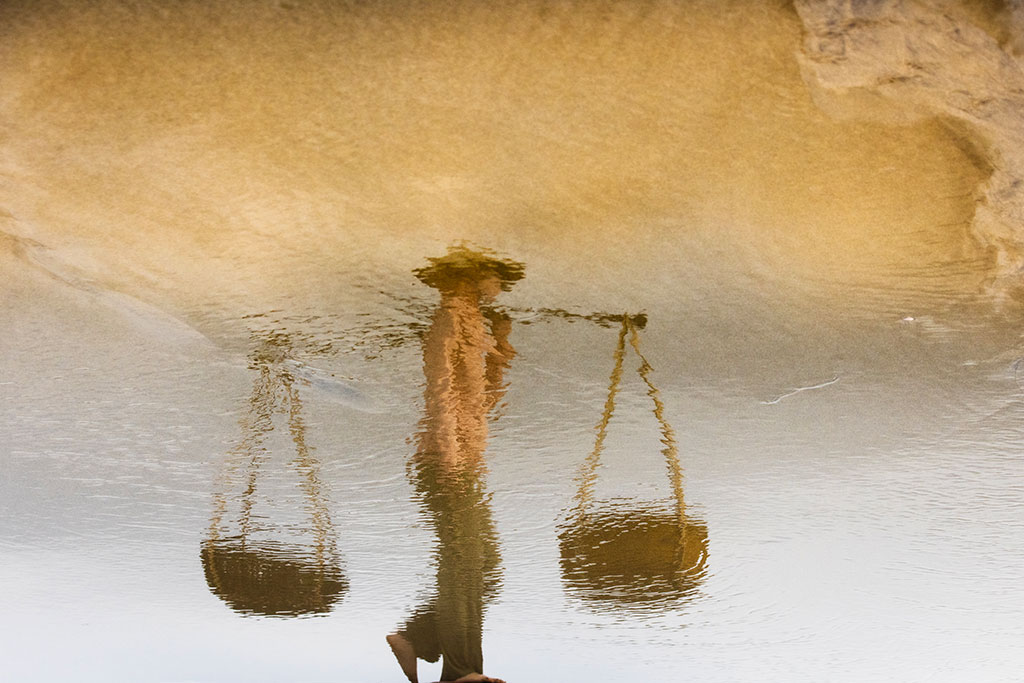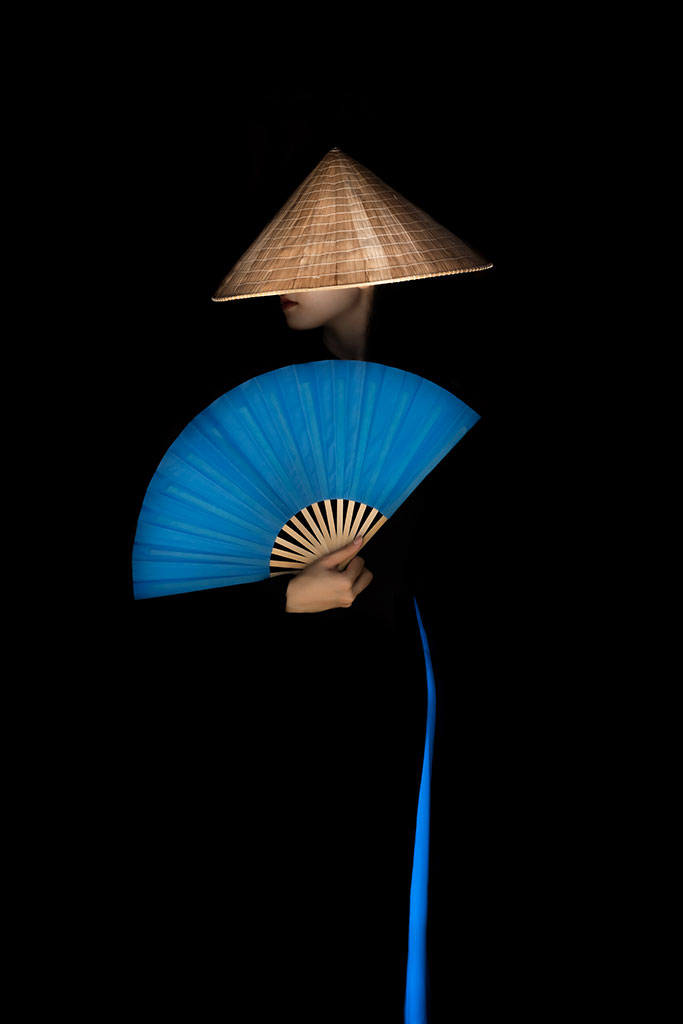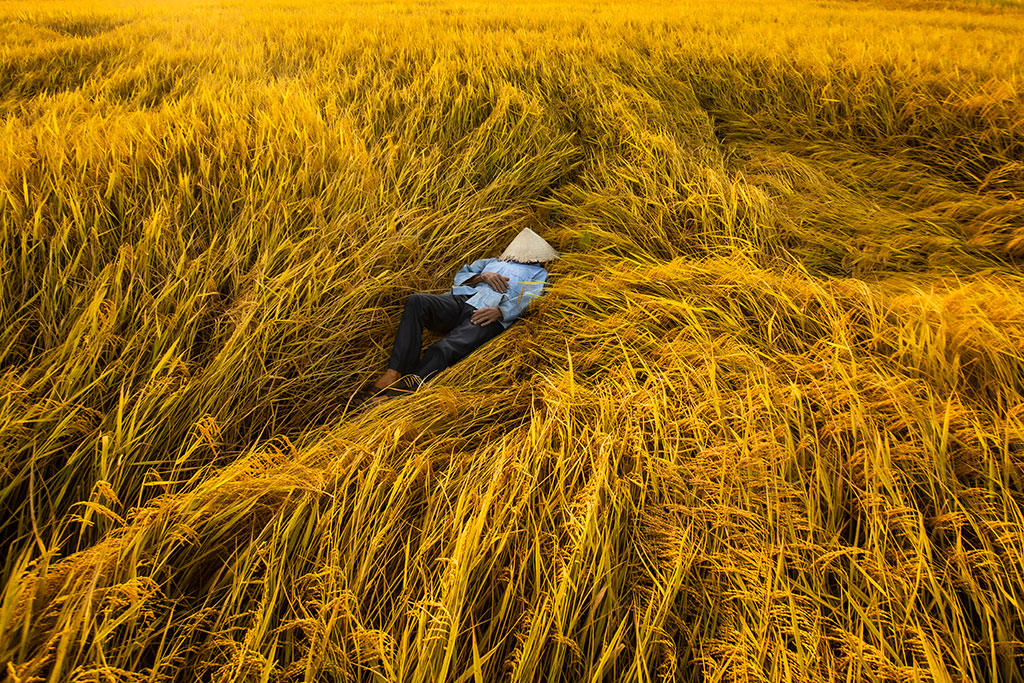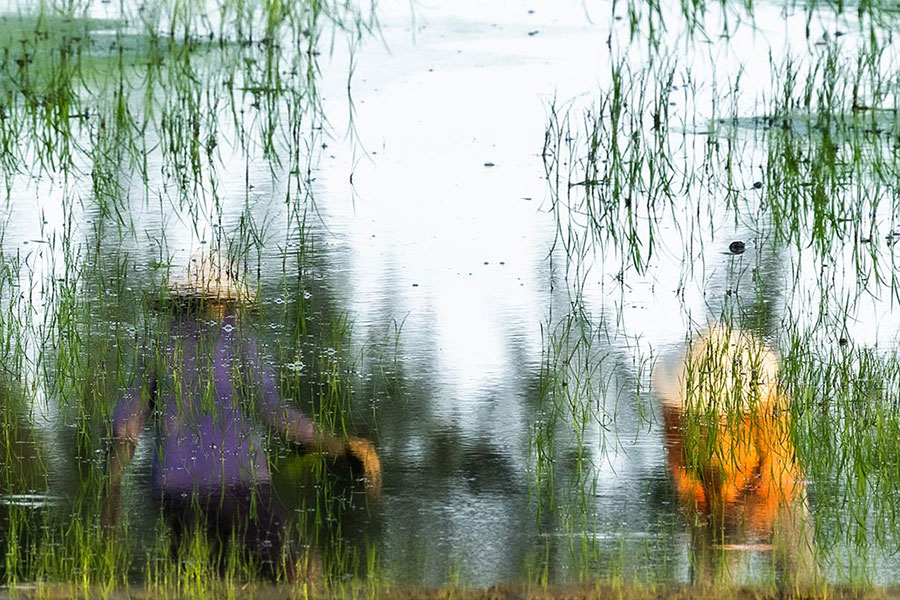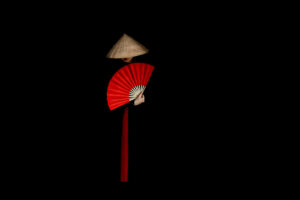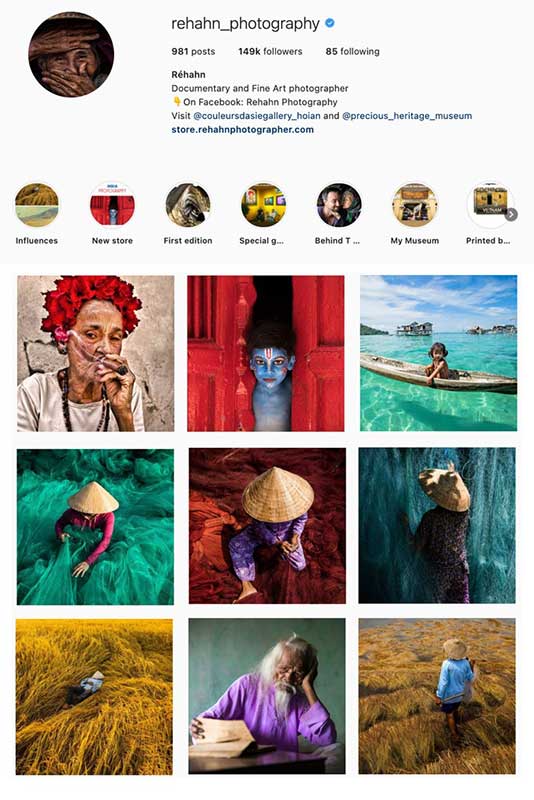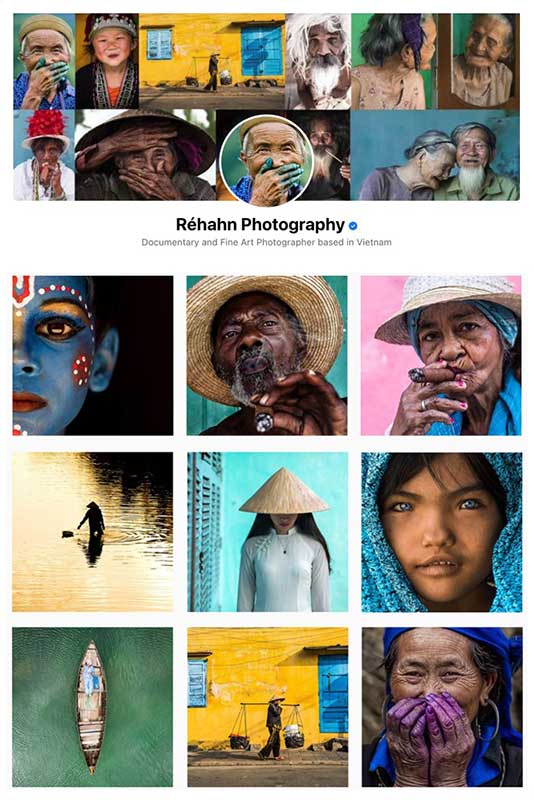Réhahn’s pinnacle new series, “Memories of Impressionism,” is a nod to the aesthetics embraced by Impressionist and Post-Impressionist painters. From the soft lines of an image reflected in water to the bright tones of pastoral landscapes, Réhahn’s Impressionist photographs are inspired by the harmony and transient spirit of nature and light, things that these painters also held dear.
Read on to learn more about Impressionism and Réhahn’s artistic process.
“Collectors often ask me where my idea for my Impressionism series began, and I always go back to the Covid confinements. I finished the Precious Heritage project in January 2020 and was locked down a few weeks later. Rather than traveling with my camera, I spent my time catching up on all the books I’d missed reading over the last 10 years of being on the road. I read Van Gogh’s letters, the biography of Degas, and a book about how Japonism influenced the Impressionists and other art movements. This final book made me realize how I already used asymmetrical and off-centered compositions, as well as harmonizing primary colors. When I was able to work again, I shot in the countryside photographing artisans and playing with colors and compositions. This is when, like the Impressionists, I decided to blur the lines.”
- Réhahn
The path to Impressionism Photography
When walking through a museum, it isn’t always easy to understand how one artistic movement connects to another. Yet, like everything in history, change results from the push and pull of past influences and aspirations for the future.
The freedom of Impressionism led to the emotionality of Post Impressionist works, which in turn created a bridge to the Expressionists and beyond.
Réhahn’s work has also gone through a similar transition that can remain opaque without the keys to understand his different periods. The artist’s first formal artistic period encompasses his Ageless Beauty and Hidden Smile images – portraits that found beauty in details that are often overlooked. This mission to go beyond surface impressions and to learn about the individual stories and histories of his subjects, drove the photographer towards his next period, which would become his passion for the following decade – Precious Heritage.
The formal portraits and documentary style photography that marked The Precious Heritage Project were necessary in order to respectfully represent the diversity of the tribal cultures in Vietnam. Precious Heritage was a deep dive into Réhahn’s adopted country. Yet, when the pandemic hit, and it was no longer safe to continue to venture into the ethnic villages, the artist returned to his own cultural roots. He was drawn to the artistic traditions of Europe, and France in particular. Impressionism was a natural direction, due to Réhahn’s affinity for pastoral scenes, vibrant colors, and subtle emotion.
More than just a technique, Impressionism was a revolution, a philosophy, a movement, and a retreat from the industrialism of the age. Impressionistic photography is Réhahn’s response to our new industrialism, a departure from the world of technology into the dreamlike tranquility of a piece of art.
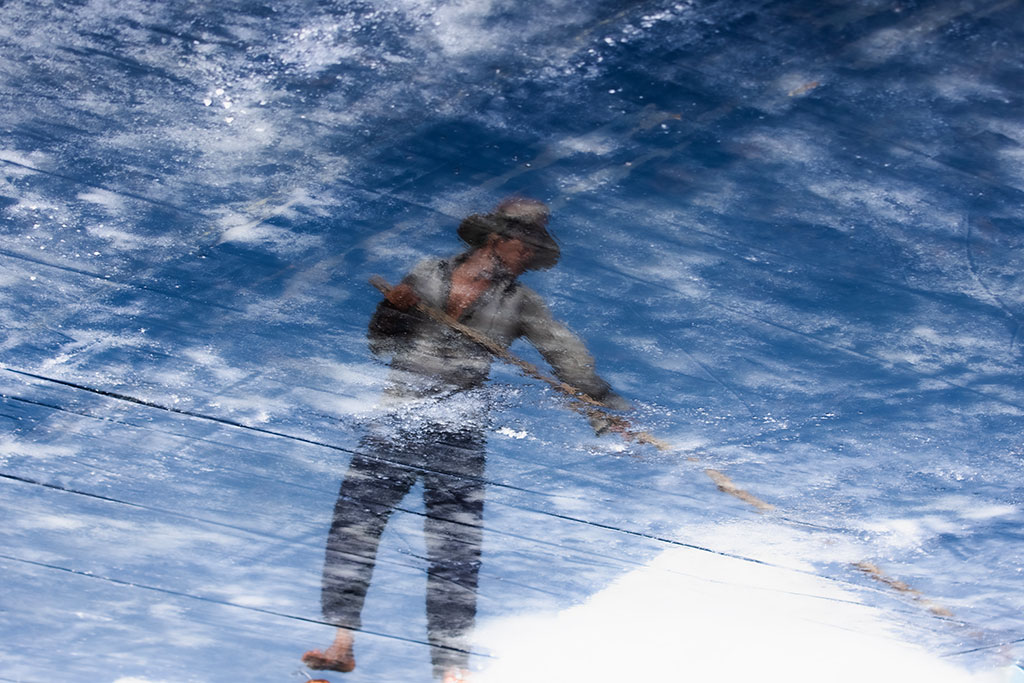
A short History of Impressionism
Impressionism began in the coastal city of Honfleur, France in the late 1800s. The town is a constant source of inspiration for Réhahn, who still owns a home there and likens it to his other coastal home – Hoi An. Known as the “Cité des Peintres” (painter’s town), Honfleur drew artists such as Claude Monet and Eugène Boudin to its picturesque waters, which became the advent of Impressionism. Paul Signac and Georges Seurat also invented the technique of pointillism there.
With the advent of photography as an art form and its inherent ability to recreate images with perfect realism, there was no longer the same need for commissioned portraits and authenticity simply for the sake of representation. Painters began seeking new ways to depict the world.
The Impressionists were primarily concerned with how to reflect upon their environments in a new way. They studied the effects of natural light and how it transformed the world as daytime rose and waned and seasons changed.
I would say that these beautiful photographs are “impressionistic” in effect or in spirit. They succeed in connoting the effect of immediacy that the Impressionist painters sought. Réhahn is attracted to phenomena of heat and smoke, just as Monet was attracted to fog because nature’s fog already provided the impressionistic effect that suited Monet’s interest in the transience and instability of the natural atmosphere. I’m most impressed by the images that capture atmospheric heat (Illusion, 2023 and Day Remnants, 2023) and the image that captures the effect of smoke (Flame, 2022), which introduces blue to the gold of the scene—an effect cultivated by Van Gogh in his images of the sower in the fields of grain.
Dr. Richard Schiff, distinguished art historian and director of the Center for the Study of Modernism at The University of Texas at Austin
The invention of the paint tube in 1841 allowed artists the new freedom of getting out of their studios to paint in the open air with ready-mixed colors. This Plein Air style allowed them to quickly create studies of their subjects as the light changed. The concept was revolutionary because of the marked change in styles and techniques that Plein Air painting produced.
While the soft lines and subject matter of Impressionist paintings may not seem rebellious now (in comparison to the explosion of post-modernism that came after), it was deemed radical in the 19th century. At the time, the Académie des Beaux-Arts, an academic art association in Paris, set the rules for what was considered acceptable in French art. Realism and classical subject matters were the standards. In contrast, the Impressionists were considered to be stylistically “sloppy” or unfinished. Yet, this lack of exact detail was exactly what these painters were after.
Impressionism and Photography
Impressionism and photography intersected very early on because the first exhibition of the works of the innovative Impressionist painters was held at the studio of the portrait photographer Felix Nadar in 1874 – the photographer whose work had a great influence on Réhahn’s Precious Heritage series.
Most of the showcased works at the expo had been rejected by the Académie, yet they included paintings by some of the most important artists in art history by today’s standards – Monet, Sisley, Degas, Renoir, Cézanne, Cassatt, and Pissarro, to name a few. Even though the new painting style was mocked by critics, it soon found its permanent place in art history.
Japonisme and the Impressionists
The Impressionists were also influenced by the sudden influx of Japanese items that entered France when trade was reintroduced between the two countries.
This included using closely cropped perspectives on objects, verticalism, negative space, and flat planes of color washes. To learn more about Japonisme’s influence on European art and Réhahn’s work, read the article – “Japonisme in Réhahn’s Photography.”
Post-Impressionism enters the Art World
The Post Impressionist movement was led by many painters who are still considered masters today. Cézanne, Van Gogh, Seurat, and Gauguin are a few of the most well-known artists in the movement. While the Post-Impressionists still valued pastoral settings, vibrant colors, and a departure from Realism, they differed from the Impressionists in terms of content.
Many Post Impressionist painters favored symbolism and structure in their works, focusing on the meanings of certain colors or images.
Van Gogh’s “The Starry Night” and his series of wheat field paintings show the importance he put into his color palette, with tones that are more pronounced than in reality.
Themes In Art History And Réhahn’s Contemporary Photography
Impressionist paintings range in theme from pastoral images to city scenes to portraits, but they all share the concept of creating a sense of a scene rather than a true-to-life representation.
In symbolism, reflections represent the idea of truth. In the Impressionist movement, painters used reflections to see the ephemeral nature of light through a new lens. Monet, Manet, Cézanne, Caillebotte, and Cassat all explored reflections in different ways unconfined by the previous need to remain realistic.
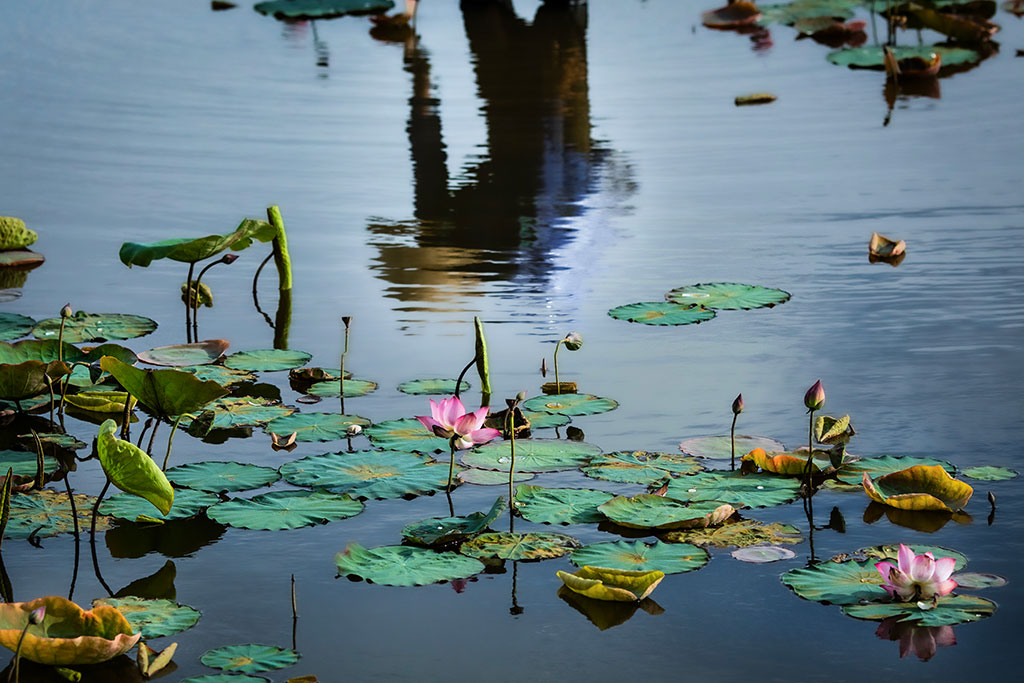
Post-Impressionists such as Van Gogh and Cézanne shifted the focus to the inner reality of the artists. Even their landscapes were intimate portrayals of their emotional states. Through the use of color and brushwork, we can get a sense of the feeling they hoped to portray. These master painters chose to use primary colors that filled their canvases with vibrant energy. Their use of color theory included creating balance through opposing colors such as a cool blue with the warmth of yellow or orange.
Techniques and effects
Since it is a new medium, there are no hard rules about what can or cannot be considered an Impressionist Photography technique. However, some general guidelines can be applied. The idea behind Impressionistic Photography should remain linked to the philosophies of the original Impressionists. The distortion should be captured through natural methods rather than filters, ensuring the concepts of plein air painting and the ephemeral effects of light remain in place. A few Impressionist techniques follow, but there may be other methods as Réhahn develops the medium.
The artist’s experimentation with ways of capturing the texture and spontaneity of paintings for his Impressionist photographs has resulted in innovative methods involving the elements of fire and water.
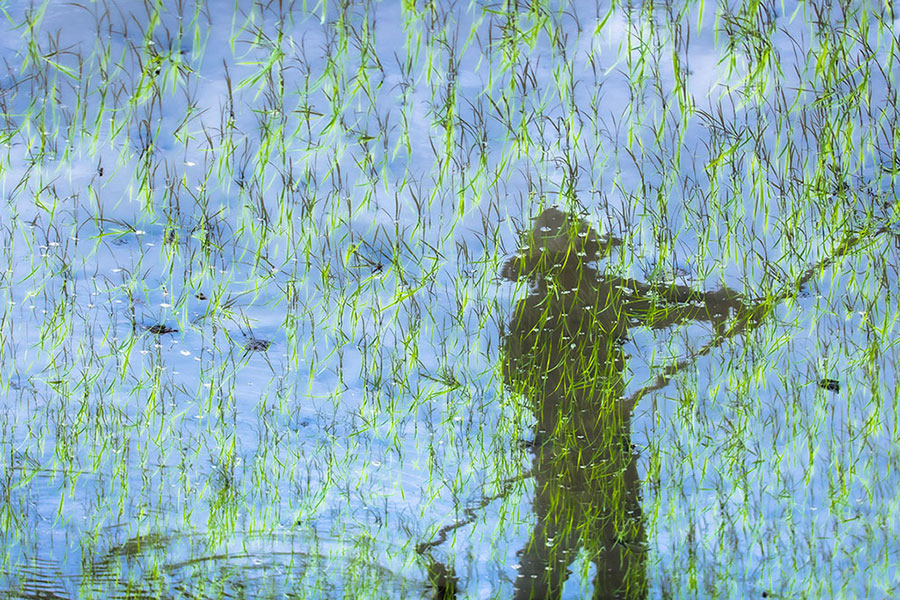
HEAT SERIES
The Hoi An countryside is filled with rice paddies that change color with the season. Many of the artist’s scenes of life photographs are set within the fields of gold and green, making them a natural place to return for inspiration. Twice a year, after the harvest, the fields are burned so that their ash can be used to fertilize peanut gardens. The smoke adds an element of texture to the scene, but the distortion created by the changing density of the superheated air is the most important element. Known as heat shimmer, the bending of light that occurs with high air temperatures creates a wavy effect in the air. The form of objects seen through this shimmer soften; their lines distorting with the air.
Réhahn shoots quickly through the heat waves to achieve photos that truly appear to have the built-up texture and brush strokes of paint. It should be noted, however, that this technique takes fortitude because of the heat from the fire, smoke inhalation and flying ash all contribute to the difficulty.
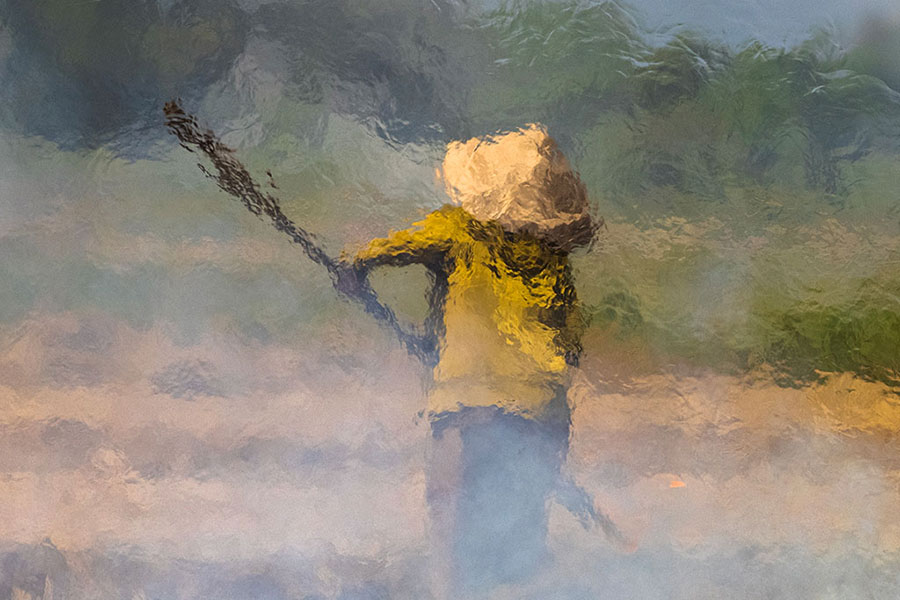
WATER SERIES
Réhahn has always experimented with the beauty of reflections. The colors of the sky at dawn reflected in a river; the duality of the world above and within the reflection; the tranquility of water … these are all subjects that the artist has returned to again and again. Yet, his techniques differ within his Impressionist photographs. Rather than simply being a part of the composition, the reflection affects the entire image. If the timing is right—there shouldn’t be too much movement in the air, nor too little—the reflection in the water will be slightly distorted, creating a dreamy atmosphere in the final photograph.
What is an Impressionist photo ?
Impressionism in photography is a style of photography that captures the fleeting moments of light and color in a scene. It is characterized by soft focus, blurred edges, and a painterly quality. Réhahn’s own impressionist images is inspired by the work of the Impressionist painters, such as Claude Monet and Pierre-Auguste Renoir. He often photographs the same locations at different times of day, seasons, and moments, trying to capture the ever-changing beauty of light and color.




